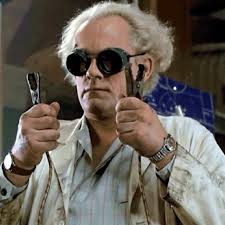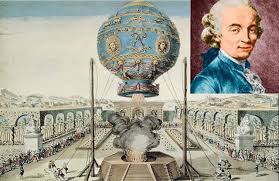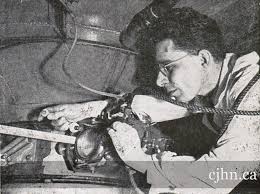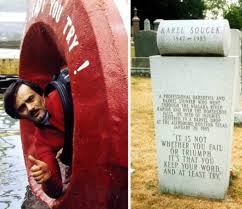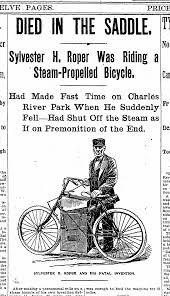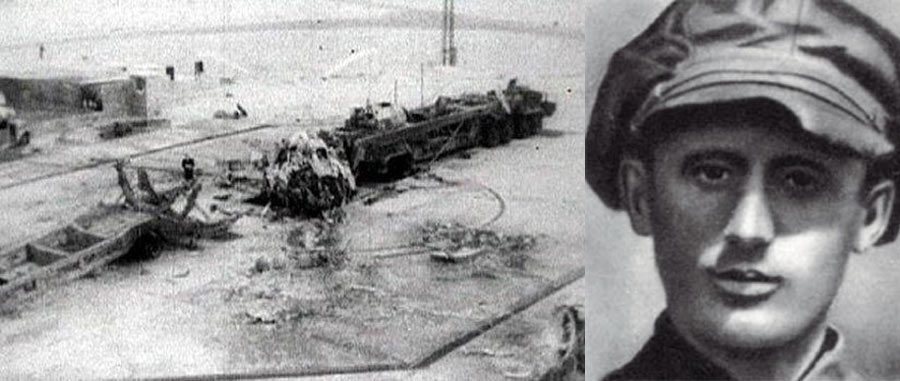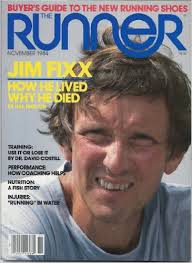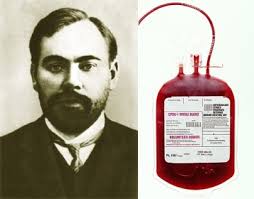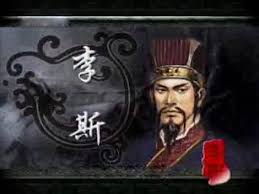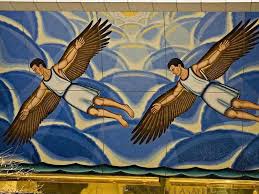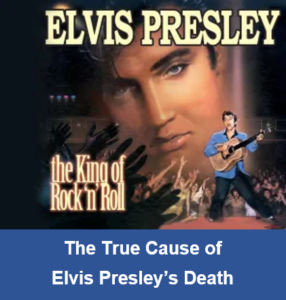 Elvis Presley suddenly dropped in the bathroom of his Graceland mansion on the afternoon of August 16, 1977. He was rushed to Baptist Memorial Hospital in Memphis, Tennessee, pronounced dead, then shipped to the morgue and autopsied the same afternoon. Three days later, the coroner issued Elvis’s death certificate stating the cause as “hypertensive cardiovascular disease with atherosclerotic heart disease” — heart attack for short.
Elvis Presley suddenly dropped in the bathroom of his Graceland mansion on the afternoon of August 16, 1977. He was rushed to Baptist Memorial Hospital in Memphis, Tennessee, pronounced dead, then shipped to the morgue and autopsied the same afternoon. Three days later, the coroner issued Elvis’s death certificate stating the cause as “hypertensive cardiovascular disease with atherosclerotic heart disease” — heart attack for short.
However, toxicology results soon identified ten pharmaceutical drugs in Elvis’s system with codeine being ten times the therapeutic level. This revelation started accusations of a cover-up and suggesting conspiracy theories of a sinister criminal act.
Pushing forty years after, modern medicine and forensics took a new look at the Presley case facts and determined something entirely different from a heart attack or a drug overdose really killed the King of Rock & Roll.
Hindsight being twenty-twenty, let’s first look at how death investigations should be conducted. Then we’ll explore the true cause of Elvis Presley’s death.
Coroners are the judge of death. It’s their responsibility to establish six main facts surrounding a death. (Coroners are not to assign blame.) In the Presley case, the facts determined at the time were:
Identity of Deceased — Elvis Aaron Presley.
Time of Death — Approximately 2:00 p.m. on Tuesday, August 16, 1977.
Place of Death — 3754 Elvis Presley Boulevard, Memphis, Tennessee.
Cause of Death — Heart attack.
Means of Death — Chronic heart disease.
Manner of Death — Natural
There’s a distinct difference between Cause of Death and Means of Death. Cause is the actual event. Means is the method in which death happened. Examples are cause being a ruptured aorta with means being a motor vehicle crash, or cause being massive cerebral interruption with means being gunshot wound to the head.
Once the first five facts are known, it’s the coroner’s duty to classify the Manner of Death. There are five universal death manner classifications:
- Natural
- Homicide
- Suicide
- Accidental
- Undetermined
Elvis Presley’s death was ruled a natural event, thought at the time as being an acute cardiac event resulting from existing cardiovascular disease. If the coroner determined Elvis died from a drug overdose, the ruling would have been accidental. No one ever claimed it was suicide or homicide.
One principle of death investigation is to look for antecedent evidence—pre-existing conditions which contributed to the death mechanism or was responsible for causing or continuing a chain of events that led to the death.
Another principle of death investigation is examining the triangle of Scene—Body—History. This compiles the totality of evidence.
Let’s look at the evidence in Elvis Presley’s death.
Scene
Elvis was found on his bathroom floor, face down in front of the toilet. It was apparent he’d instantly collapsed from a sitting position and there was no sign of a distress struggle or attempt to summon help. When the paramedics arrived, he was cold, blue, and had no vital signs. Rigor mortis had not set in, so he’d probably expired within the hour.
 He was transported by ambulance to Baptist Memorial Hospital where a vain attempt at resuscitation occurred because “he was Elvis”. He was declared dead at 3:16 p.m. and was shipped to the morgue where an autopsy was promptly performed.
He was transported by ambulance to Baptist Memorial Hospital where a vain attempt at resuscitation occurred because “he was Elvis”. He was declared dead at 3:16 p.m. and was shipped to the morgue where an autopsy was promptly performed.
There was no suggestion of suicide or foul play so there was no police investigation. The scene wasn’t photographed, nor preserved, and there was no accounting for what medications or other drugs might have been present at Graceland.
Body
Elvis was in terrible health. His weight was estimated at 350 pounds, and he was virtually non-functional at the end, being mostly bed-ridden and requiring permanent nursing care. He suffered from an enlarged heart which was twice the size of normal and showed advanced evidence of cardiovascular disease in his coronary vessels, aorta, and cerebral arteries—certainly more advanced than a normal 42-year-old would be.
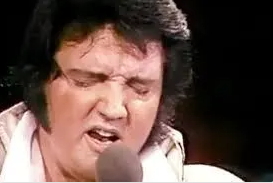 His lungs showed signs of emphysema, although he’d never smoked, and his bowel was found to be twice the length of normal with an impacted stool estimated to be four months old. Elvis also suffered from hypogammaglobulinemia which is an immune disorder, as well as showed evidence of an autoimmune inflammatory disorder.
His lungs showed signs of emphysema, although he’d never smoked, and his bowel was found to be twice the length of normal with an impacted stool estimated to be four months old. Elvis also suffered from hypogammaglobulinemia which is an immune disorder, as well as showed evidence of an autoimmune inflammatory disorder.
Toxicology tested positive for ten separate prescription medications but showed negative for illicit drugs and alcohol. The only alarming pharmaceutical indicator, on its own, was codeine at ten times the prescribed manner but not in lethal range.
History
Elvis was born on January 8, 1935, in Tupelo, Mississippi. He had a twin brother who died at birth. As a youth, Elvis was active and healthy which continued during his time in the army and all through his early performing stage when he was a bundle of energy. He began experimenting with amphetamines, probably to enhance his performances, but shied from alcohol as it gave him violent tendencies.
 In 1967, Elvis came under the primary care of Dr. George Nichopoulos who was well-known to celebrities. Then, Elvis was 32 and weighed 163 pounds. His only known medical ailment was slightly high blood pressure, presumably due to his high-fat diet.
In 1967, Elvis came under the primary care of Dr. George Nichopoulos who was well-known to celebrities. Then, Elvis was 32 and weighed 163 pounds. His only known medical ailment was slightly high blood pressure, presumably due to his high-fat diet.
Also in 1967, Elvis’s health took a sudden turn with progressive chronic pain, insomnia, hypertension, lethargy, irrational behavior, and immense weight gain. Over his remaining years, Elvis was seen by many different doctors and was hospitalized a number of times, all the while resorting to self-medication with a wide assortment of drugs from dozens of sources.
Doctor Nick, as Nichopoulos was called, stayed as Elvis’s personal physician till the end. He was present at the death scene, as well as during the autopsy. Doctor Nick concurred with the coroner’s conclusion that the cause of death was a natural cardiac event resulting from an arrhythmia, or sudden interruption of heartbeat, and agreed that Elvis’s death was not due to a drug overdose.
When the toxicology report was released, it came with a qualifier:
“Diazepam, methaqualone, phenobarbital, ethchlorvynol, and ethinamate are below or within their respective ranges. Codeine was present at a level approximately 10 times those concentrations found therapeutically. In view of the polypharmacy aspects, this case must be looked at in terms of the cumulative pharmacological effect of the drugs identified by the report.”
Because the tox report appeared to contradict the autopsy report’s stated cardiac cause of death, a prominent toxicologist was asked to review the findings. His opinion was:
“Coupled with this toxicological data are the pathological findings and the reported history that the deceased had been mobile and functional within 8 hours prior to death. Together, all this information points to a conclusion that, whatever tolerance the deceased may have acquired to the many drugs found in his system, the strong probability is that these drugs were the major contribution to his demise.”
The Tennessee Board of Health then began an investigation into Elvis’s death which resulted in proceedings against Doctor Nick.
 Evidence showed that during the seven and a half months preceding Elvis’s death—from January 1, 1977, to August 16, 1977—Doctor Nick wrote prescriptions for Elvis for at least 8,805 pills, tablets, vials, and injectables. Going back to January 1975, the count was 19,012.
Evidence showed that during the seven and a half months preceding Elvis’s death—from January 1, 1977, to August 16, 1977—Doctor Nick wrote prescriptions for Elvis for at least 8,805 pills, tablets, vials, and injectables. Going back to January 1975, the count was 19,012.
These numbers might defy belief, but they came from an experienced team of investigators who visited 153 pharmacies and spent 1,090 hours going through 6,570,175 prescriptions and then, with the aid of two secretaries, spent another 1,120 hours organizing the evidence.
The drugs included uppers, downers, and powerful painkillers such as Dilaudid, Quaalude, Percodan, Demerol, and Cocaine Hydrochloride in quantities more appropriate for those terminally ill with cancer.
Doctor Nick admitted to this. His defense was because Elvis was so wired on pain killers, he prescribed these medications to keep Elvis away from dangerous street drugs, thereby controlling Elvis’s addiction—addiction being a disease.
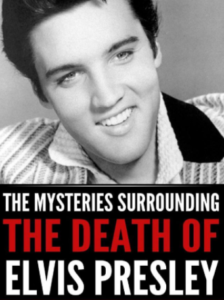 One of the defense witnesses was Dr. Forest Torrent, a prominent California physician and a pioneer in the use of opiates in pain treatment who explained how the effects this level of codeine would have contributed to Elvis’s death.
One of the defense witnesses was Dr. Forest Torrent, a prominent California physician and a pioneer in the use of opiates in pain treatment who explained how the effects this level of codeine would have contributed to Elvis’s death.
Central to misconduct allegations was the issue of high codeine levels in Elvis at the time of death—codeine being the prime toxicological suspect as the pharmaceutical contributor. It was established that Elvis obtained codeine pills from a dentist the day before his death and Doctor Nick had no knowledge of it.
The jury bought it and Doctor Nick was absolved of negligence in directly causing Elvis Presley’s fatal event.
Continuing Investigation
Dr. Torrent was convinced there were other contributing factors leading to Elvis’s death. In preparation for Doctor Nick’s trial, Dr. Torrent had access to all of Elvis Presley’s medical records, including the autopsy and toxicology reports. Incidentally, these two reports are the property of the Presley estate and are sealed from public view until 2027, fifty years after Elvis’s death.
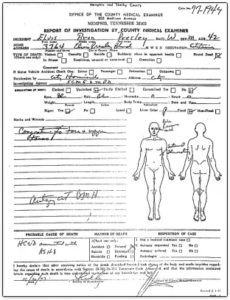 Dr. Torrent was intrigued by the sudden change in Elvis starting in 1967. He discovered that while in Los Angeles filming the movie Clambake, Elvis tripped over an electrical cord, fell, and cracked his head on the edge of a porcelain bathtub. Elvis was knocked unconscious and had to be hospitalized. Dr. Torrent found three other incidents where Elvis suffered head blows and he suspected Elvis suffered from what’s now known as Traumatic Brain Injury—TBI—and that’s what caused progressive ailments which led to his death.
Dr. Torrent was intrigued by the sudden change in Elvis starting in 1967. He discovered that while in Los Angeles filming the movie Clambake, Elvis tripped over an electrical cord, fell, and cracked his head on the edge of a porcelain bathtub. Elvis was knocked unconscious and had to be hospitalized. Dr. Torrent found three other incidents where Elvis suffered head blows and he suspected Elvis suffered from what’s now known as Traumatic Brain Injury—TBI—and that’s what caused progressive ailments which led to his death.
Dr. Torrent released a paper titled Elvis Presley: Head Trauma, Autoimmunity, Pain, and Early Death. It’s a fascinating read—recently published in Practical Pain Management.
Dr. Torrent builds a theory that Elvis’s bathtub head injury was so severe that it caused brain tissue to be jarred loose and leak into his general blood circulation. This is now known to be a leading cause of autoimmune disorder which causes a breakdown of other organs. But this was unknown in 1967, and Elvis went untreated. Side effects are chronic pain, irrational behavior, and severe bodily changes such as obesity and enlarged organs like hearts and bowels.
Today, TBI is a recognized health issue in professional contact sports.
With a change in mental state and suffering chronic pain, Elvis Presley entered a ten-year spiral towards death. He became hopelessly addicted to pain killers, practiced a terribly unhealthy diet and lethargic lifestyle, and resorted to the typical addict’s habit of sneaking a fix wherever he could. This led to early coronary vascular disease and, combined with his escalating weight and pill consumption, Elvis was a heart attack ready to burst.
Recall that I used the term antecedent, like all coroners do when assessing a cause of death. Given Dr. Torrent’s observations—and all the facts compiled from forty years—if I were the coroner completing Elvis Presley’s death certificate today, I’d write it like this:
Identity of Deceased — Elvis Aaron Presley.
Time of Death — Approximately 2:00 p.m. on Tuesday, August 16th, 1977.
Place of Death — 3754 Elvis Presley Boulevard, Memphis, Tennessee.
Cause of Death — Cardiac arrhythmia, antecedent to hypertensive cardiovascular disease with atherosclerotic heart disease, antecedent to polypharmacy, antecedent to autoimmune inflammatory disorder, antecedent to traumatic brain injury.
Means of Death — Complications from Cumulative Head Trauma.
Therefore, I’d have to classify the manner or classification of Elvis’s death as an Accident.
There’s no one to blame—certainly not Elvis. He was a severely injured and sick man. There’s no specific negligence on anyone’s part and, definitely, no cover-up or conspiracy in a criminal act.
If Dr. Forrest Torrent is right, which I believe he is, there simply wasn’t a proper understanding back then in determining the true cause of Elvis Presley’s death.

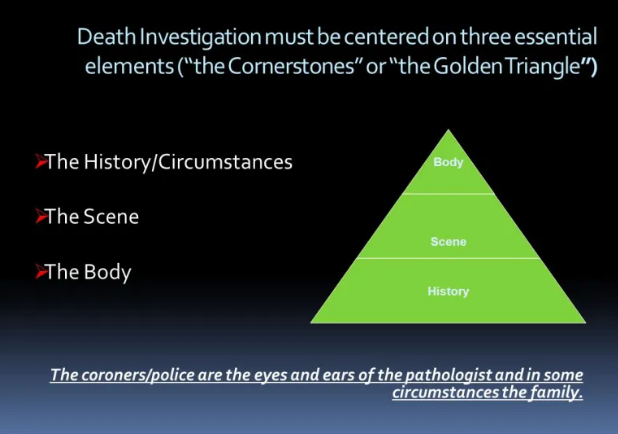
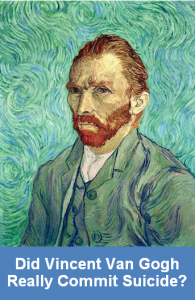
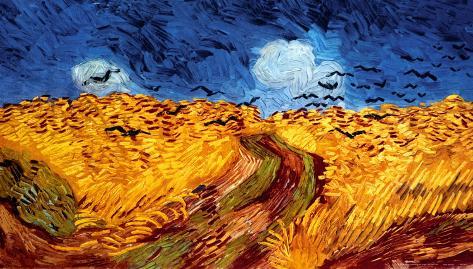
 Most people know the story of Vincent Van Gogh’s ear. It’s a true story, but the truth is he only cut part of his left ear off with a razor during a difficult episode with his on-again, off-again relationship with painter Paul Gauguin. The story goes on that Van Gogh gave his ear piece to a brothel lady, then he bandaged himself up and painted one of many self-portraits. I just looked at this portrait (Google makes Dutch Master shopping easy) and was struck by the image of his right side being bandaged. Then I realized Van Gogh painted selfies by looking in a mirror.
Most people know the story of Vincent Van Gogh’s ear. It’s a true story, but the truth is he only cut part of his left ear off with a razor during a difficult episode with his on-again, off-again relationship with painter Paul Gauguin. The story goes on that Van Gogh gave his ear piece to a brothel lady, then he bandaged himself up and painted one of many self-portraits. I just looked at this portrait (Google makes Dutch Master shopping easy) and was struck by the image of his right side being bandaged. Then I realized Van Gogh painted selfies by looking in a mirror. Vincent Van Gogh’s spirit left this world at 1:30 a.m. on July 29. He passed without medical intervention on his bed, and the medical cause was, most likely, exsanguination or internal bleeding. There was no autopsy, and Van Gogh was buried in a nearby churchyard the next day.
Vincent Van Gogh’s spirit left this world at 1:30 a.m. on July 29. He passed without medical intervention on his bed, and the medical cause was, most likely, exsanguination or internal bleeding. There was no autopsy, and Van Gogh was buried in a nearby churchyard the next day.
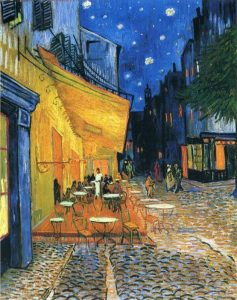 Other people weren’t. In 2011, two researchers took a good and hard look into Van Gogh’s life and death. They had full access to the Van Gogh Museum’s archives in Amsterdam and spent enormous time reviewing original material. They found a few things.
Other people weren’t. In 2011, two researchers took a good and hard look into Van Gogh’s life and death. They had full access to the Van Gogh Museum’s archives in Amsterdam and spent enormous time reviewing original material. They found a few things.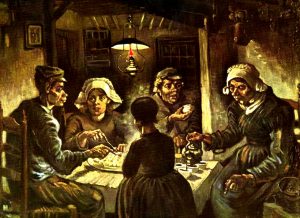 Researchers Naifeh and Smith also took a deep dive into what they could find on Rene Secretan’s background. They painted him as a big kid—a thug and a bully who was well known to have picked on wimpy Van Gogh throughout the month of July 1890. Secretan came from a wealthy Paris family who summered at Auvers with their second home within walking distance of Van Gogh’s rooming house.
Researchers Naifeh and Smith also took a deep dive into what they could find on Rene Secretan’s background. They painted him as a big kid—a thug and a bully who was well known to have picked on wimpy Van Gogh throughout the month of July 1890. Secretan came from a wealthy Paris family who summered at Auvers with their second home within walking distance of Van Gogh’s rooming house.
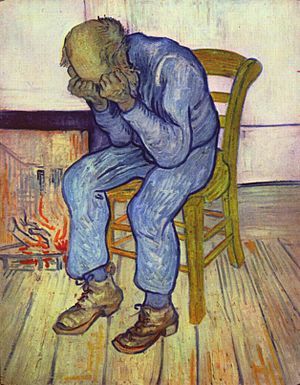 If I were the coroner ruling on Vincent Van Gogh’s death, I’d readily concur the cause of death was slow exsanguination resulting from a single gunshot wound to the abdomen. I’d have a harder time with the classification. Here, I’d have to use a process of elimination from the five categories—natural, homicide, accidental, suicide, or undetermined.
If I were the coroner ruling on Vincent Van Gogh’s death, I’d readily concur the cause of death was slow exsanguination resulting from a single gunshot wound to the abdomen. I’d have a harder time with the classification. Here, I’d have to use a process of elimination from the five categories—natural, homicide, accidental, suicide, or undetermined.
